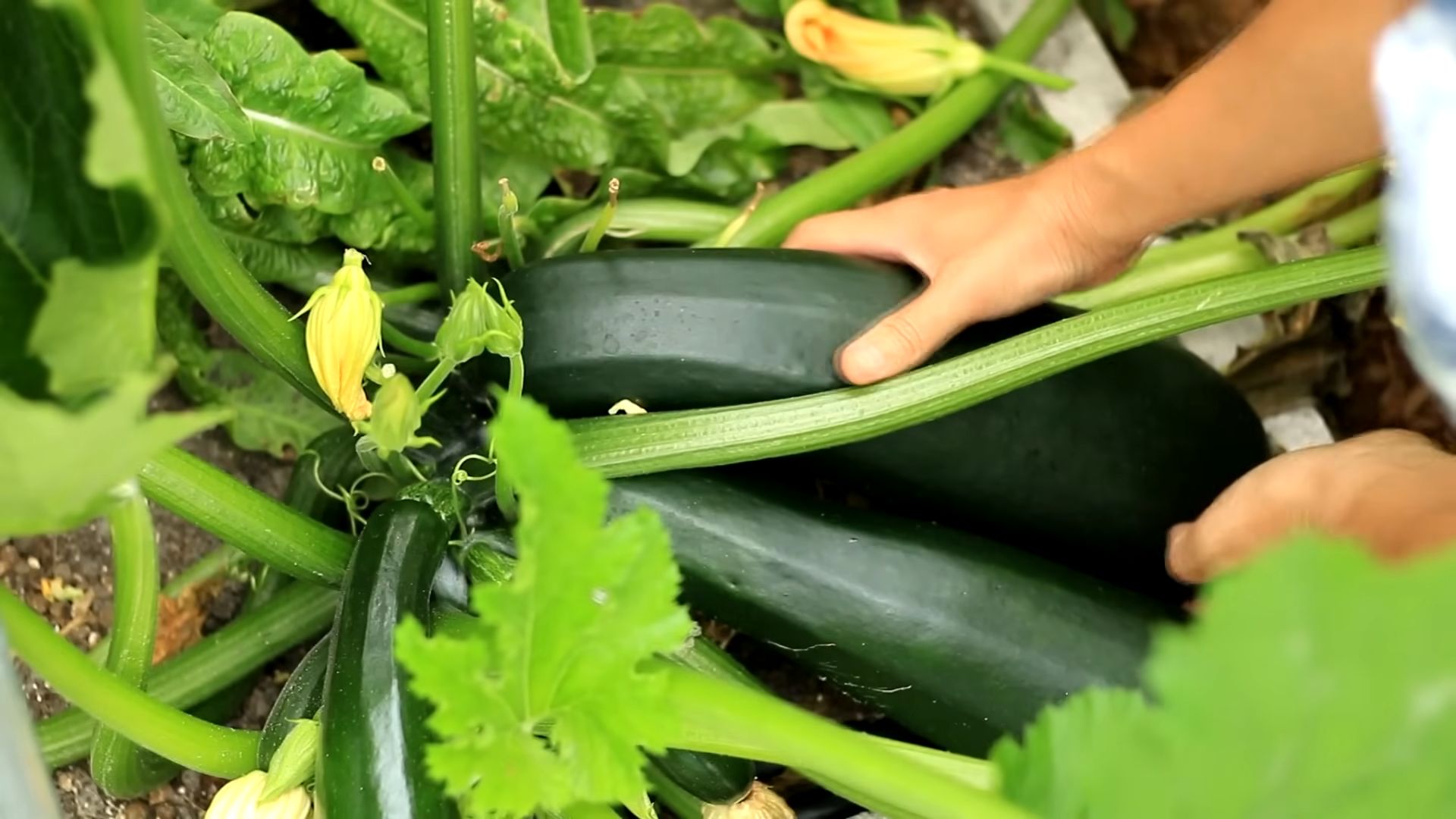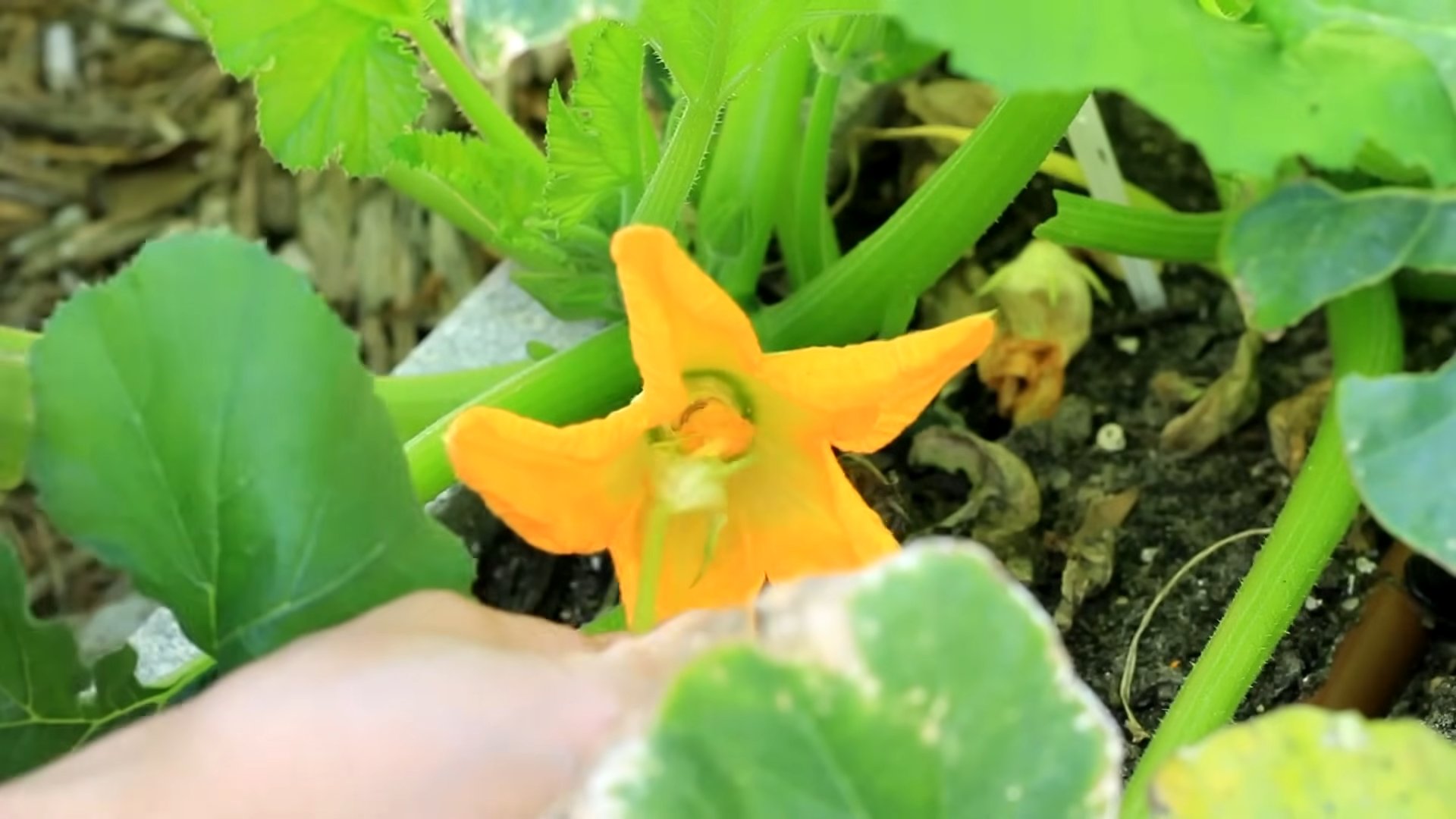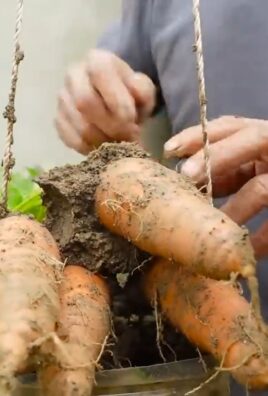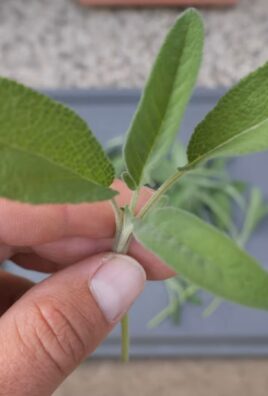Zucchini Home Gardening Guide: Your Path to Bountiful Harvests!
Have you ever dreamed of stepping into your backyard and harvesting fresh, vibrant zucchini right from your own garden? Imagine the delicious zucchini bread, stir-fries, and grilled delights you could create! Well, dream no more! This Zucchini Home Gardening Guide is your key to unlocking a world of homegrown goodness, even if you’re a complete beginner.
Zucchini, a member of the squash family, has a rich history, with its origins tracing back to Central and South America. While the varieties we know and love today were developed in Italy, zucchini has become a staple in gardens worldwide. For generations, gardeners have cherished zucchini for its prolific yields and versatility in the kitchen.
But let’s be honest, sometimes growing zucchini can feel like a challenge. Pests, diseases, and even just knowing when to harvest can leave you scratching your head. That’s where this DIY guide comes in! I’m going to share my tried-and-true tips and tricks to help you navigate the world of zucchini cultivation. From choosing the right variety to warding off common problems, I’ll walk you through every step of the process.
Why do you need this guide? Because growing your own zucchini is not only rewarding but also incredibly cost-effective and healthy. You’ll have access to fresh, organic produce right at your fingertips, and you’ll know exactly where your food is coming from. Plus, there’s nothing quite like the satisfaction of nurturing a plant from seed to harvest. So, let’s dive in and get your zucchini garden started today!

Growing Zucchini: A Beginner’s Guide to Bountiful Harvests
Okay, zucchini lovers, let’s dive into the wonderful world of growing your own zucchini! I’m going to walk you through everything you need to know to get those gorgeous green (or yellow!) veggies popping up in your garden. Trust me, there’s nothing quite like the taste of homegrown zucchini, and it’s surprisingly easy to get started.
Choosing Your Zucchini Variety
First things first, let’s talk about zucchini varieties. There’s more than just the standard dark green kind! Here are a few popular options:
* Black Beauty: This is your classic, reliable zucchini. It’s dark green, productive, and has a mild flavor.
* Golden Zucchini: If you want a splash of color, go for golden zucchini! They have a slightly sweeter taste than the green varieties.
* Costata Romanesco: This Italian heirloom variety has distinctive ridges and a nutty flavor. It’s also a bit more compact than some other types.
* Round Zucchini (Eight Ball, One Ball): These are super cute and perfect for stuffing! They’re also great for grilling.
Consider your space and your taste preferences when choosing your variety. I personally love growing both Black Beauty and Golden Zucchini for variety.
Preparing Your Garden Bed
Zucchini plants are hungry, hungry hippos! They need rich soil and plenty of sunlight. Here’s how to get your garden bed ready:
* Sunlight: Zucchini needs at least 6-8 hours of direct sunlight per day. Choose a spot in your garden that gets plenty of sunshine.
* Soil: Zucchini thrives in well-drained, fertile soil. Amend your soil with compost or well-rotted manure to improve its fertility and drainage.
* Spacing: Zucchini plants can get quite large, so give them plenty of space. I recommend spacing them about 2-3 feet apart. If you’re planting in rows, space the rows about 3-4 feet apart.
* pH: Zucchini prefers a soil pH between 6.0 and 7.5. You can test your soil pH with a soil testing kit and amend it accordingly.
Planting Your Zucchini
You can start zucchini seeds indoors or direct sow them in your garden. I usually prefer direct sowing because it’s less work, but starting indoors can give you a head start.
Starting Seeds Indoors (Optional)
1. Timing: Start your seeds indoors about 3-4 weeks before the last expected frost.
2. Containers: Use peat pots or biodegradable pots to avoid disturbing the roots when transplanting.
3. Soil: Fill the pots with a seed-starting mix.
4. Planting: Plant 2-3 seeds per pot, about 1 inch deep.
5. Watering: Keep the soil moist but not soggy.
6. Light: Provide plenty of light, either with a grow light or by placing the pots in a sunny window.
7. Hardening Off: Before transplanting, gradually acclimate the seedlings to outdoor conditions by hardening them off for a week. Place them outside for a few hours each day, gradually increasing the amount of time they spend outdoors.
Direct Sowing
1. Timing: Sow seeds directly in your garden after the last expected frost, when the soil has warmed to at least 60°F (15°C).
2. Planting: Plant seeds about 1 inch deep and 2-3 feet apart.
3. Watering: Water the soil thoroughly after planting.
4. Thinning: Once the seedlings emerge, thin them to one plant per spot. Choose the strongest, healthiest seedling and remove the others.
Caring for Your Zucchini Plants
Once your zucchini plants are established, they’re relatively easy to care for. Here are a few tips:
* Watering: Water deeply and regularly, especially during hot, dry weather. Zucchini plants need about 1 inch of water per week. Avoid watering the foliage, as this can promote fungal diseases. I like to use a soaker hose or drip irrigation to water at the base of the plants.
* Fertilizing: Fertilize your zucchini plants every 2-3 weeks with a balanced fertilizer. You can also side-dress them with compost or well-rotted manure.
* Weeding: Keep the area around your zucchini plants free of weeds. Weeds compete with zucchini plants for water and nutrients.
* Pest Control: Zucchini plants can be susceptible to pests such as squash bugs, squash vine borers, and aphids. Inspect your plants regularly for pests and take action if necessary. I prefer to use organic pest control methods, such as insecticidal soap or neem oil.
* Pollination: Zucchini plants have separate male and female flowers. The female flowers need to be pollinated in order to produce fruit. If you’re not seeing any fruit, you may need to hand-pollinate the flowers. To hand-pollinate, simply use a small paintbrush to transfer pollen from the male flower to the female flower. You can identify the female flowers by the small zucchini fruit at the base of the flower.
Dealing with Common Zucchini Problems
Even with the best care, you might encounter some problems with your zucchini plants. Here are a few common issues and how to deal with them:
* Powdery Mildew: This fungal disease causes a white, powdery coating on the leaves. To prevent powdery mildew, provide good air circulation and avoid watering the foliage. If your plants get powdery mildew, you can treat them with a fungicide.
* Squash Bugs: These pests suck the sap from zucchini plants, causing them to wilt and die. Inspect your plants regularly for squash bugs and their eggs. You can hand-pick the bugs and eggs, or use insecticidal soap to control them.
* Squash Vine Borers: These pests bore into the stems of zucchini plants, causing them to wilt and die. To prevent squash vine borers, wrap the base of the stems with aluminum foil or netting. If your plants get squash vine borers, you can try to remove them by slitting the stem and pulling them out.
* Blossom End Rot: This condition causes the blossom end of the zucchini fruit to rot. Blossom end rot is caused by a calcium deficiency. To prevent blossom end rot, make sure your soil is rich in calcium and water your plants regularly.
Harvesting Your Zucchini
Now for the fun part – harvesting! Zucchini grows quickly, so you’ll need to check your plants regularly.
1. Timing: Harvest zucchini when they are young and tender, about 6-8 inches long. Larger zucchini can be tough and seedy.
2. Method: Use a sharp knife to cut the zucchini from the plant. Be careful not to damage the plant.
3. Frequency: Harvest zucchini frequently to encourage the plant to produce more fruit. If you let the zucchini get too large, the plant will stop producing.
Enjoying Your Zucchini Harvest
Congratulations, you’ve grown your own zucchini! Now it’s time to enjoy the fruits (or vegetables!) of your labor. Zucchini is incredibly versatile and can be used in a variety of dishes. Here are a few ideas:
* Grilled Zucchini: Slice zucchini lengthwise and grill it with olive oil, salt, and pepper.
* Zucchini Bread: Grate zucchini and add it to your favorite bread recipe.
* Zucchini Noodles (Zoodles): Use a spiralizer to turn zucchini into noodles. Serve with your favorite sauce.
* Stuffed Zucchini: Hollow out zucchini and stuff it with a mixture of ground meat, rice, and vegetables.
* Zucchini Fritters: Grate zucchini and mix it with flour, eggs, and seasonings. Fry the mixture in oil until golden brown.
* Zucchini Soup: Blend zucchini with broth, herbs, and spices to make a creamy soup.
Saving Zucchini Seeds (Optional)
If you want to save seeds from your zucchini plants, choose the healthiest, most productive plant. Allow a few zucchini to mature fully on the plant. The zucchini will become very large and the skin will harden.
1. Harvesting: Harvest the mature zucchini and cut them open.
2. Removing Seeds: Scoop out the seeds and rinse them in water to remove any pulp.
3. Drying: Spread the seeds on a paper towel and let them dry completely.
4. Storing: Store the dried seeds in an airtight container in a cool, dark place.
Extending the Zucchini Season
Want to keep the zucchini coming for as long as possible? Here are a few tips:
* Succession Planting: Plant new zucchini seeds every few weeks to extend the harvest season.
* Cold Frames: Use cold frames to protect your zucchini plants from frost in the

Conclusion
So, there you have it! Taking control of your zucchini cultivation is not only achievable but incredibly rewarding. This DIY guide empowers you to bypass expensive seedlings and questionable store-bought produce, offering a direct path to fresh, flavorful zucchini right from your own backyard. We’ve covered everything from seed selection and soil preparation to planting techniques and ongoing care, ensuring you have the knowledge and confidence to succeed.
Why is this DIY approach a must-try? Because it’s about more than just growing zucchini; it’s about connecting with nature, understanding the food you eat, and enjoying the satisfaction of nurturing something from seed to harvest. Imagine the pride you’ll feel serving a zucchini dish made with ingredients you grew yourself! Plus, you’ll know exactly what went into your zucchini – no harmful pesticides or hidden chemicals.
But the beauty of home gardening lies in its adaptability. Feel free to experiment with different zucchini varieties. Try growing classic Black Beauty, the vibrant Golden zucchini, or even the round, decorative Eight Ball zucchini. Consider companion planting to enhance growth and deter pests. Marigolds, nasturtiums, and basil are excellent choices for planting alongside your zucchini.
Don’t be afraid to get your hands dirty and learn as you go. Gardening is a journey, and every season brings new lessons and opportunities. And remember, even experienced gardeners face challenges. The key is to observe, adapt, and never give up.
We’re confident that with this guide, you’ll be well on your way to a bountiful zucchini harvest. So, grab your seeds, prepare your soil, and embark on this exciting gardening adventure. We encourage you to try this DIY zucchini home gardening method and witness the difference it makes.
Most importantly, we want to hear about your experiences! Share your successes, your challenges, and any tips or tricks you discover along the way. Post photos of your zucchini plants, your harvests, and your delicious zucchini creations on social media using #DIYZucchiniGarden. Let’s build a community of home gardeners and inspire others to grow their own food. Happy gardening!
Frequently Asked Questions (FAQ)
What is the best time to start zucchini seeds indoors?
The ideal time to start zucchini seeds indoors is approximately 3-4 weeks before the last expected frost in your area. This allows the seedlings to develop a strong root system before being transplanted outdoors. Check your local weather forecasts and planting calendars to determine the appropriate timing for your region. Starting too early can result in leggy, weak seedlings that struggle to adapt to outdoor conditions.
How often should I water my zucchini plants?
Zucchini plants require consistent moisture, especially during hot, dry weather. Water deeply and regularly, aiming to keep the soil consistently moist but not waterlogged. A good rule of thumb is to water when the top inch of soil feels dry to the touch. Avoid overhead watering, as this can increase the risk of fungal diseases. Instead, water at the base of the plant, using a soaker hose or drip irrigation system if possible. Mulching around the plants can also help retain moisture and suppress weeds.
What are some common pests and diseases that affect zucchini plants?
Zucchini plants are susceptible to several pests and diseases, including squash vine borers, squash bugs, aphids, powdery mildew, and blossom end rot. Regularly inspect your plants for signs of infestation or disease. Squash vine borers can be controlled by wrapping the base of the stems with aluminum foil or netting. Squash bugs can be handpicked or trapped under boards placed near the plants. Aphids can be washed off with a strong stream of water or treated with insecticidal soap. Powdery mildew can be prevented by ensuring good air circulation and avoiding overhead watering. Blossom end rot is caused by calcium deficiency and can be prevented by maintaining consistent soil moisture and adding calcium to the soil.
How do I know when my zucchini is ready to harvest?
Zucchini is typically ready to harvest when it is 6-8 inches long. The skin should be smooth and tender, and the flesh should be firm. Overripe zucchini can become tough and seedy. Use a sharp knife to cut the zucchini from the plant, leaving a short stem attached. Regular harvesting encourages the plant to produce more fruit.
Can I eat zucchini blossoms?
Yes, zucchini blossoms are edible and can be a delicious addition to your culinary repertoire. They can be stuffed, fried, or added to salads and soups. Harvest the male blossoms (those without a small zucchini attached) to avoid reducing fruit production. Pick the blossoms in the morning when they are fully open.
What kind of soil is best for growing zucchini?
Zucchini thrives in well-drained, fertile soil that is rich in organic matter. Amend your soil with compost or aged manure before planting to improve its structure and nutrient content. A slightly acidic to neutral soil pH (6.0-7.5) is ideal.
How much sunlight do zucchini plants need?
Zucchini plants require at least 6-8 hours of direct sunlight per day to thrive. Choose a sunny location in your garden for planting. Insufficient sunlight can result in weak, leggy plants and reduced fruit production.
Can I grow zucchini in containers?
Yes, zucchini can be grown in containers, but you’ll need to choose a large container (at least 24 inches in diameter) to accommodate the plant’s size and root system. Use a high-quality potting mix and ensure the container has good drainage. Water regularly and fertilize every few weeks.
Why are my zucchini flowers falling off without producing fruit?
This is a common problem known as blossom drop. It can be caused by several factors, including insufficient pollination, extreme temperatures, and nutrient deficiencies. Ensure that your plants are receiving adequate sunlight and water. Hand-pollinate the flowers by transferring pollen from the male flowers to the female flowers using a small brush. Fertilize with a balanced fertilizer to provide essential nutrients.
How can I prevent powdery mildew on my zucchini plants?
Powdery mildew is a fungal disease that can affect zucchini plants, causing a white, powdery coating on the leaves. To prevent powdery mildew, ensure good air circulation around your plants by spacing them adequately. Avoid overhead watering and water in the morning so that the leaves have time to dry before nightfall. You can also apply a fungicide specifically designed for powdery mildew if necessary. Milk spray (a mixture of milk and water) is also a popular organic remedy.
Is it necessary to prune zucchini plants?
Pruning zucchini plants is not always necessary, but it can help improve air circulation and sunlight penetration, which can reduce the risk of disease. Remove any yellowing or damaged leaves. You can also remove some of the larger leaves to allow more sunlight to reach the developing fruit.
How do I deal with squash vine borers?
Squash vine borers are a common pest that can kill zucchini plants by tunneling into the stems. To prevent squash vine borers, wrap the base of the stems with aluminum foil or netting. You can also inject Bacillus thuringiensis (Bt) into the stems to kill the larvae. Regularly inspect your plants for signs of infestation, such as small holes in the stems or wilting leaves.
What are some good companion plants for zucchini?
Good companion plants for zucchini include marigolds, nasturtiums, basil, oregano, and thyme. These plants can help deter pests and attract beneficial insects. Avoid planting zucchini near potatoes or other members of the squash family, as they can compete for nutrients.
How do I store zucchini after harvesting?
Store zucchini in the refrigerator in a plastic bag or container. It will typically last for 1-2 weeks. You can also freeze zucchini by shredding it and blanching it for a few minutes before freezing. Frozen zucchini is best used in cooked dishes.




Leave a Comment